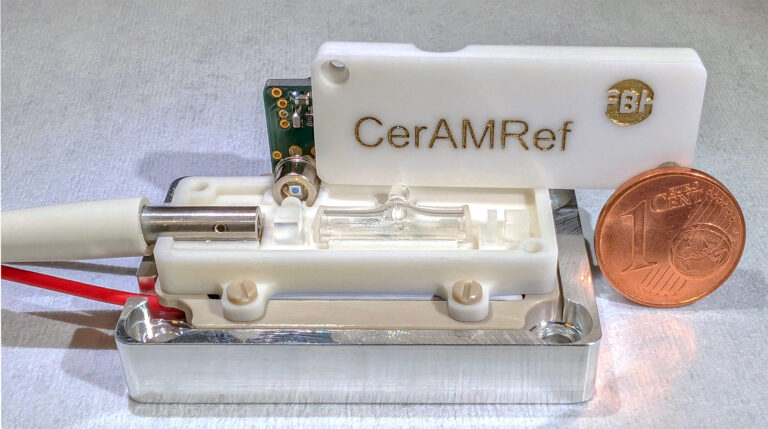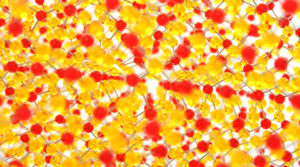Just as the miniaturization of computer transistors has revolutionized entertainment, communications, medicine, and more, scientists at University of Texas at Austin want to achieve the same breakthrough for light absorbers.
Though perhaps less widely recognized, light absorbers play a crucial role in many commonly used technologies. “Absorbers are optical elements that, instead of reflecting or transmitting light, capture the incoming light and convert it to another form of energy,” said Zarko Sakotic, a postdoctoral fellow at the Chandra Department of Electrical and Computer Engineering at UT Austin. “This process is widely used in solar cells and sensors, such as your cell-phone camera, but is also the reason your car gets hot when left in the sun.”
But creating miniature light absorbers is easier said than done due to the need for precise control of material properties, advanced fabrication techniques, and complex design considerations to ensure efficient light absorption and heat management at very small scales.
“When the absorber element is very small, almost all the device performance metrics improve, such as reduced noise and increased sensitivity of the detector,” said Sakotic. “However, it is usually not a trivial task to minimize the absorber size while also maintaining strong absorption efficiency; this is a trade-off in such devices that limits the benefits of decreased absorber volume.”
Swapping to metals
Traditionally, light absorbers are made using semiconductors, which have conductive properties intermediate between insulators such as plastic, rubber, and wood, and metals like silver and gold, crucially influencing their interaction with light.
As semiconductors can convert optical signals into electrical signals, they are the go-to material platform for most detectors. Metals, however, are promising alternative, especially in the realm of thermal detectors, due to their ability to convert light into heat quickly, efficiently, and using a minimal footprint. According to the researchers, this is a result of the large number of free electrons in metals, which vastly outnumber those in semiconductors. Building absorbers from metals instead allows for the “extreme miniaturization of the absorber element”.
“Flat metal surfaces have historically been used as mirrors for visible, infrared, and radio-frequency electromagnetic radiation,” said Sarkotic. But highly reflective mirrors are not useful as absorbers.
“It is now well understood that the physics of the interaction between light waves and free electrons, which largely dominate the optical response of metals, is much more rich,” he continued. “Structured metal films can manipulate light in numerous ways, including fully absorbing certain colors of light.”
Flat, ultra-thin metals may be new up-and-comers in the field, offering strong absorption with minimal reflection.
Metal films and sandwiched layers
The unique physics of metal films enabled researchers to develop sensors based on absorbers that are smaller than the wavelength of light — often less than hundreds of nanometers. However, the team were able to further reduce the thickness to the single nanometer range–on the scale of atoms and molecules.
The device was created using e-beam lithography, a technique that shapes material by irradiating it with a beam of electrons. The sensor is arranged as a sandwich structure made up of a thick, highly reflecting metal film, an insulating dielectric material, like germanium, and is capped with an ultra-thin metal film, which serves as the absorber. The structure is designed to preferentially absorb in the infrared (IR) wavelength range.
“The infrared wavelength range is interesting for a variety of technological and scientific reasons; for example detecting and discerning different wavelengths of infrared light is the basis of infrared detectors used in deep space imaging,” explained Sakotic. “Another relevant area is thermal physics, as physical bodies emit heat through infrared radiation, and regulating this process is important in thermal imaging or radiative cooling. Additionally, most molecular vibrations are at infrared wavelengths, which makes this range important for chemical sensing.”
IR’s wavelengths are approximately an order of magnitude greater than the thickness of the sandwich, but hundreds of times thicker than the metal film absorbing the incident radiation, making their sensor dozens of times thinner than those produced using more traditional approaches.
The study also demonstrated that the wavelength the material absorbs can be adjusted by adding another metal layer within the dielectric material layer; the electrons in this effectively control how light propagates inside the structure. This flexibility allows the creation of various sensors from the same basic structure, simplifying production for diverse applications.
Beyond the initial findings
Sakotic says that this study goes beyond just the design of this new nanoscale device. “Another finding of our study relates to metal ‘dilution’,” he said. “When metal layers are made extremely thin, their optical response can get more unpredictable and often with lower quality, requiring a lot of additional empirical work and improvements to get the desired response.
“Our approach allows us to circumvent this — we start from a slightly thicker metal that has predictable, high-quality response, after which perforate the metal on lateral length scales much smaller than the wavelength of the light we want to absorb,” he added. “In this way, we can mimic the behavior of much thinner metal films, while simultaneously preserving high-quality response and reducing the volume of the absorber.”
The scientists hope their results will not remain in the lab for long. The miniaturization that their approach promises could greatly improve sensors used in infrared telescopes, like the James Webb Space Telescope, and could even serve as nanoscale sources of thermal radiation for ultra-small IR lightbulbs.
Reference: Zarko Sakotic, Daniel Wasserman, et al, Mid-Infrared Perfect Absorption with Planar and Subwavelength-Perforated Ultrathin Metal Films, Advanced Physics Research (2024). DOI: 10.1002/apxr.202400012
Feature image credit: SuttleMedia on Pixabay













+ There are no comments
Add yours